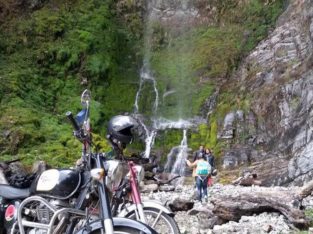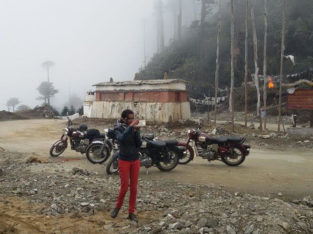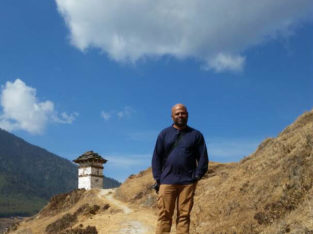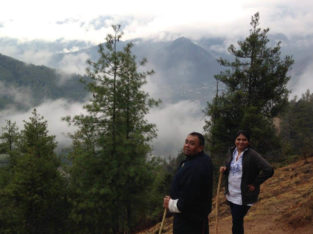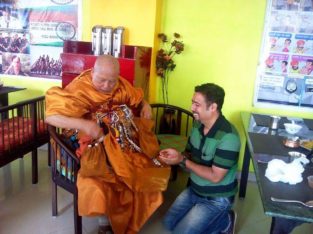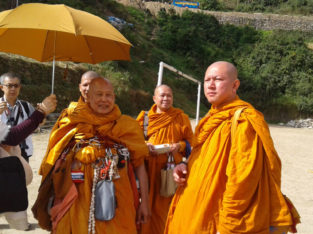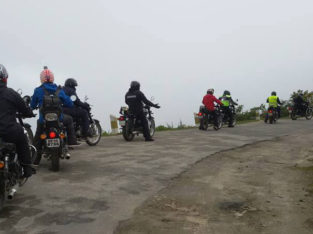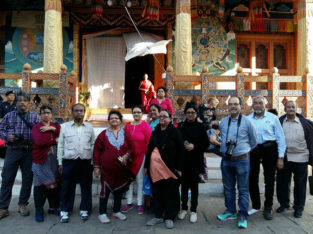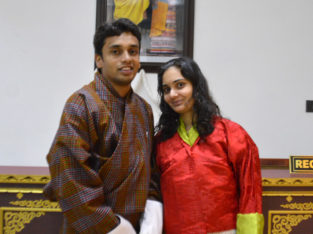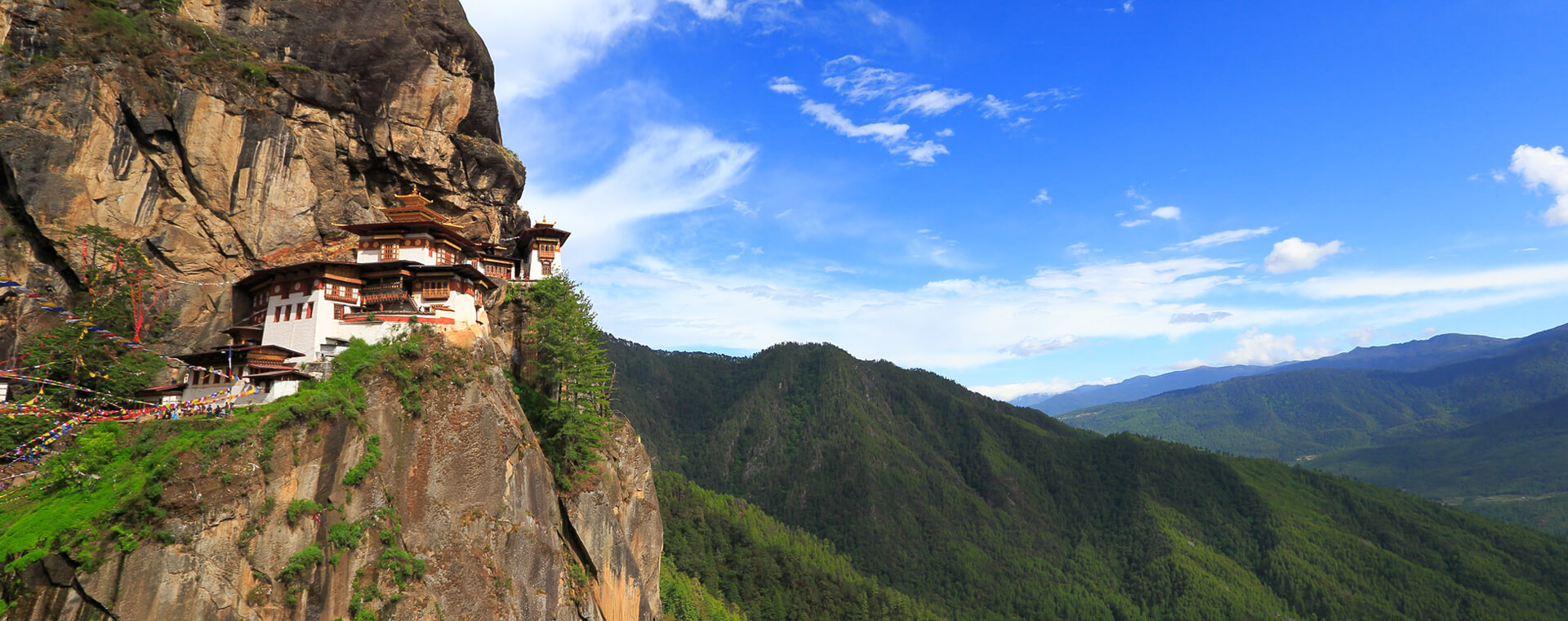Paro beginning of your Journey
A trip to Bhutan normally begins and ends at Paro and there can be few more charming valleys to be welcomed by from which to remember the land of the Thunder Dragon. Mt. Jhomolhari, reigns in white glory and the glacier waters from it’s peaks stream in torrential flows through deep gorges until finally converging to form the Pacchu River that nourishes the valley. Paro Airport, the only airport in Bhutan. The elegant and perfectly symmetrical Rinpung Dzong looks after the religious and secular activities in the valley. Paro is also a paradise for pilgrimages as it is the first stop of Guru Padma Sambhava also known as Guru Rimpoche on his crusade from Tibet to Bhutan in the 8th century. He is believed to have arrived on a back of a tigress and mediated at the Taktsang Monastery.
The beautiful valley of Paro encapsulates within itself a rich culture, scenic beauty and hundreds of myths and legends. It is home to many of Bhutan's oldest temples and monasteries, National Museum and country's only airport. Mount. Chomolhari (7,314m) reigns in white glory at the northern end of the valley and its glacial water plunge through deep gorges to form Pa Chhu (Paro river). Paro is also one of the most fertile valley in the Kingdom producing a bulk of the locally famous red rice from its terraced fields.
Good to Know
At a Glance
Altitude
Place to see
Festivals and Events
Things to Know
Top Things to Do
Rinpung Dzong
Built in 1646 by Shabdrung Ngawang Namgyal , the first spiritual and temporal ruler of Bhutan, the Dzong houses the monastic body of Paro, the office of the Dzongda (district administrative head) and Thrimpon (judge) of Paro district. The approach to the Dzong is through a traditional covered bridge called Nemi Zam. A walk through the bridge, over a stone inlaid path, offers a good view of the architectural wonder of the Dzong as well as life around it. It is also the venue of Paro Tshechu, held once a year in the spring.
Ta Dzong
One time watch tower built to defend Rinpung Dozng during inter-valley wars of the 17th century, since 1967 Ta Dzong is serving as the National Museum of the country. It holds fascinating collection of art, relics, religious thangkha paintings and Bhutan's exquisite postage stamps. The museum circular shape augments its varied collection displayed over several floors.
Drukgyel Dzong
This Dzong, with a delightful village nestling at its foot, was built in 1646 by Shabdrung Ngawang Namgyal to commemorate his victory over the Tibetan invaders. Historically and strategically this Dzong withstood all its glory and was featured in 1914 vide National Geographic magazine. The glory of Drukgyel Dzong remained even when its was destroyed by fire in 1951. On a clear day, one can see the commanding view of Mount. Chomolhari from the village, below the Dzong.
Kyichu Lhakhang
It is one of the oldest and most sacred shrines of the Kingdom dating back to 7th century (the other is Jambey Lhakahng in Bumthang). The lhakhang complex is composed of two temples. The first temple was built by Tibetan King, Songtsen Gampo in the 7th century and in 1968, H.M. Ashi Kesang, the Queen Mother of Bhutan, built the second temple in original pattern.
Farm House (traditional village house)
The beauty of Paro valley is embellished by cluster of quaint farm houses. Bhutanese farm houses are very colorful, decorative and traditionally built without the use of single nail. All houses follow the same architectural pattern. A visit to Farm House is very interesting and offers a good glimpse into the lifestyle of a farmer.
Druk Choeding
Built in 1525, this town temple was formed by Ngawang Chhogyel, one of the prince-abbots of Ralung in Tibet and an ancestor of the Shabdrung Ngawang Namgyal.
Dungtse Lhakhang
To the west of the road is Dungtse Lhakhang, a chorten-like temple. This unusual building was built in 1433 by the iron bridge builder Thangtong Gyalpo. It has three floors representing hell, earth and heaven and the paintings inside are said to be some of the best in Bhutan.
Beyond Dungtse Lhakhang, to the east of the road, the tiny Pana Lhakhang is quite old and is believed to have been built in the seventh century.
Ugyen Pelri Palace
Ugyen Pelri Palace is in a secluded wooded compound on the south side of the river just west of the Dzong. This Palace was built by the Paro Penlop, Tsering Penjor, in the early 1900s. It is designed after Guru Rinpoche's celestial paradise, Zangto Pelri, and is one of the most beautiful examples of Bhutanese architecture.
Jangsarbu Lhakhang
Located behind Paro Dzong, this small temple is home to a magnificent statue of Sakyamuni Buddha that was carried all the way from Lhasa and also houses the protector deity of Paro. Legend has it that the statue of Sakyamuni was destined for Paro Dzong and merely placed in the temple for overnight safe keeping. However, when the time came to move the statue, it proved impossible to lift. As a result, it became a permanent feature of the lhakhang.
Taktshang Lhakhang (Tiger's Nest)
It is one of the most famous of Bhutan's monasteries, perched on the side of a cliff 900m above the Paro valley floor. It is said that Guru Rinpoche arrived here on the back of a tigress and meditated at this monastery and hence it is called ``Tiger's Nest``. This site has been recognized as a most sacred place and visited by Shabdrung Ngawang Namgyal in 1646 and now visited by all Bhutanese at least once in their lifetime. On 19 April, 1998, a fire severely damaged the main structure of building but now this Bhutanese jewel has been restored to its original splendour.
Haa Valley
Start the day early for drive to Haa via Chele-la pass. 4 Km away at Bondey village the road to Haa diverts towards the right hand side and ascends towards the chele-la pass starts. After driving through blue pine & rhododendron forest for 45 km, reach Chele-la pass (4200 meters). From this point one can have a superb views of Mt. Chomolhari & Jichu Drakey. This is a very good place to walk around for few minutes enjoying the view. Drive on to Haa, descending all the way for another 22 km (under an hours drive), finally reaching Haa. The Haa Dzong is presently occupied by military, but the view from outside is stunning. After picnic lunch visit to the famous Monastery of Lhakhang Karpo (White Temple) followed by visit to Lhakhang Nagpo (Black Temple). The central shrine in Lhakhang Nagpo is said to have no difference with that of Lhasa JOWO in Tibet. The construction of the Lakhang Karpo is believed to have been assisted by the locality.
Kila Goemba
It is the serene home of Buddhist nuns who have dedicated their life for spiritual fulfillment and leading undisturbed life of religious studies, prayer and meditation. The goemba is nestled in a craggy patch on mountain side below the Chelela pass and perched precariously along the rock face. From Chelela pass, the lhakhang is about an hour walk amidst magnificent wooded area.
Chelela Pass
Chele la (pass), at an elevation 3,988 meters is considered to be one of the highest motorable passes in Bhutan. About an hour's drive along a thickly-forested road, is this Pass-a botanical paradise. The pass provides stunning views of the sacred mountain Jomolhari and Jichu Drake. It is also marked by hundreds of prayer flags fluttering in the wind. Here, visitors can see cascades of wild roses; purple and yellow primulas; and swathes of deep blue iris covering the forest floor. The top of the pass bloom with rhododendrons in a variety of colours-pale pink, deep pink, burnt orange, mauve, white and scarlet.
Dzongdrakha Goemba
Often called as mini Takstang, Dzongdrakha is a cliff-side temple complex on the western side of the Paro Valley. Four shrines make up the complex, dedicated to Drolma (Tara), Tsheringma (Goddess of Longevity), Guru Rinpoche and the Buddha of the Future, Maitreya. Local oral tradition states that when Guru Rinpoche first came to Bhutan, he came from Nepal, first landing at Drakarpo, and then Dzongdrakha before arriving at Taktshang (Tiger's Nest) farther north up the valley. Located approx 20 minute drive from Paro, these temples are built on a cliff above Bondey village but the walk is not as strenuous as Taktshang. From the road, it take only about 30 minutes walk to reach here, through forests of rhododendron and oak trees with white monkeys on it. Dzongdrakha also hosts an annual Tshechu (festival) that takes place the day before and the day after the larger Paro Tshechu held at Rinpung Dzong near the main town. During the festival at Dzongdrakha, one of the main blessings takes place when the chorten (stupa) of the past Buddha is opened so that attendees are blessed by the relic held within. The Dzongdrakha village has numerous temples and is known for most of their men being either fully ordained monks or gomchens (lay monks who don’t take vows of celibacy). Ironically it is the women who work in the fields and are the bread earners unlike in any other part of the country.
Pictures from Happy Travellers
